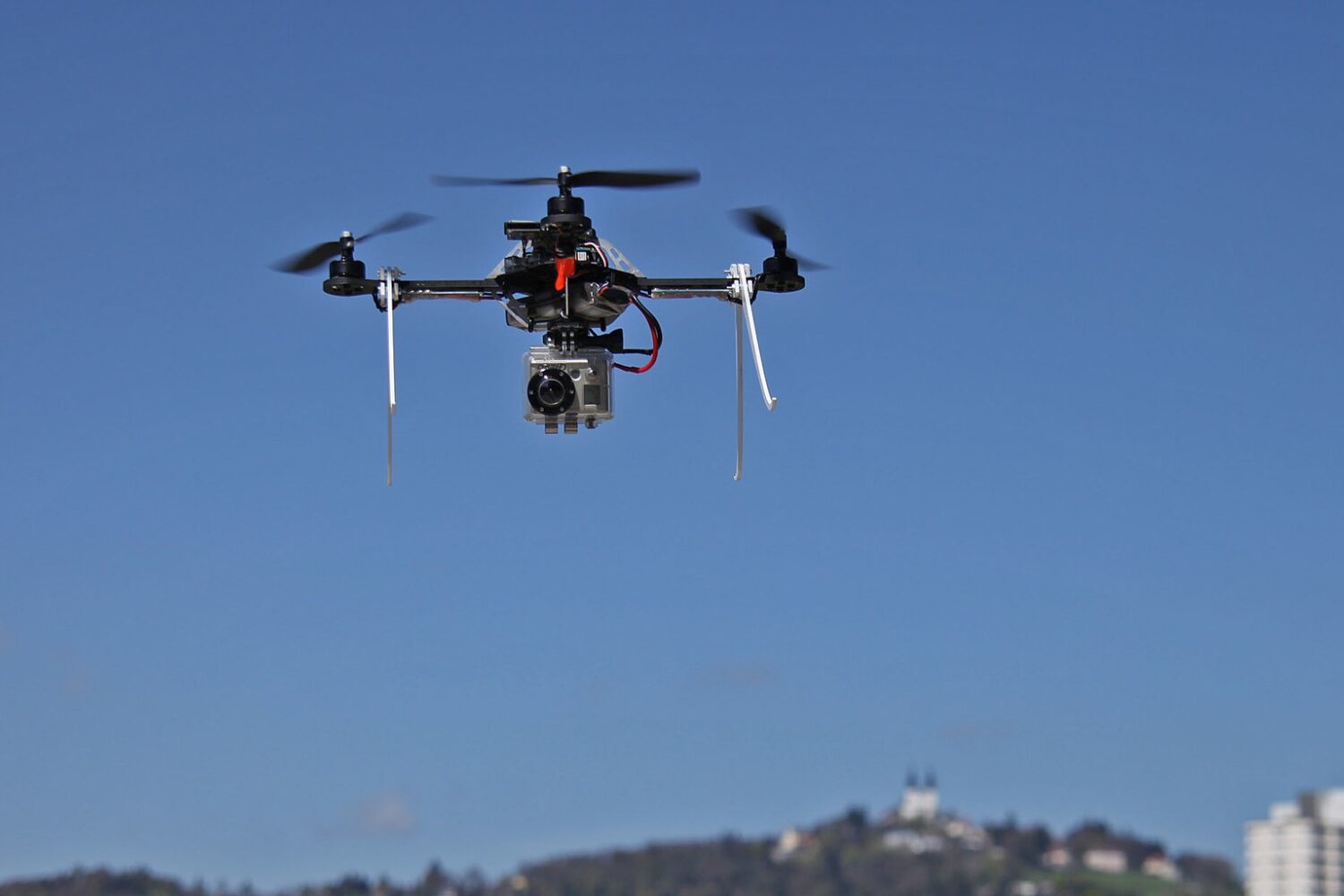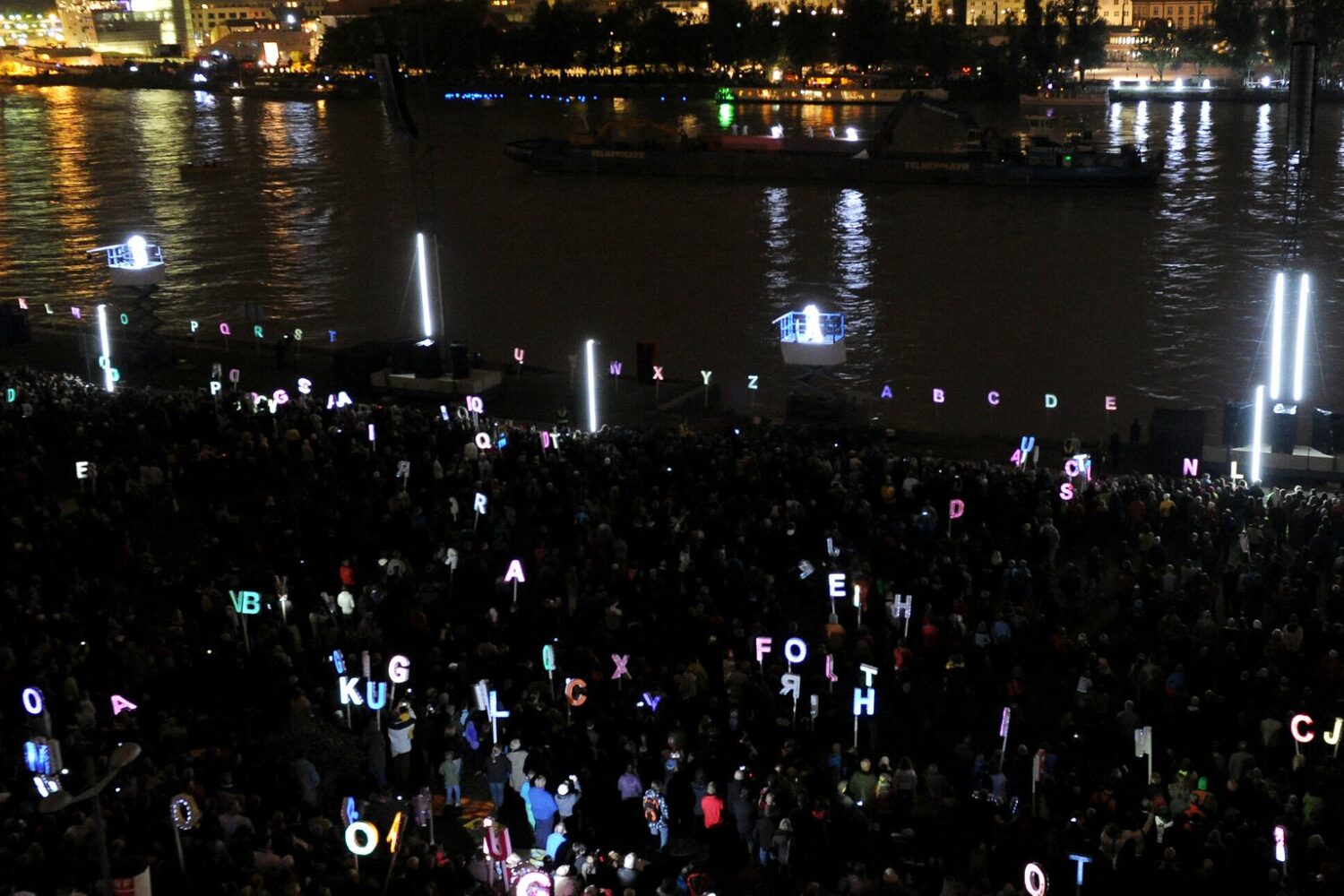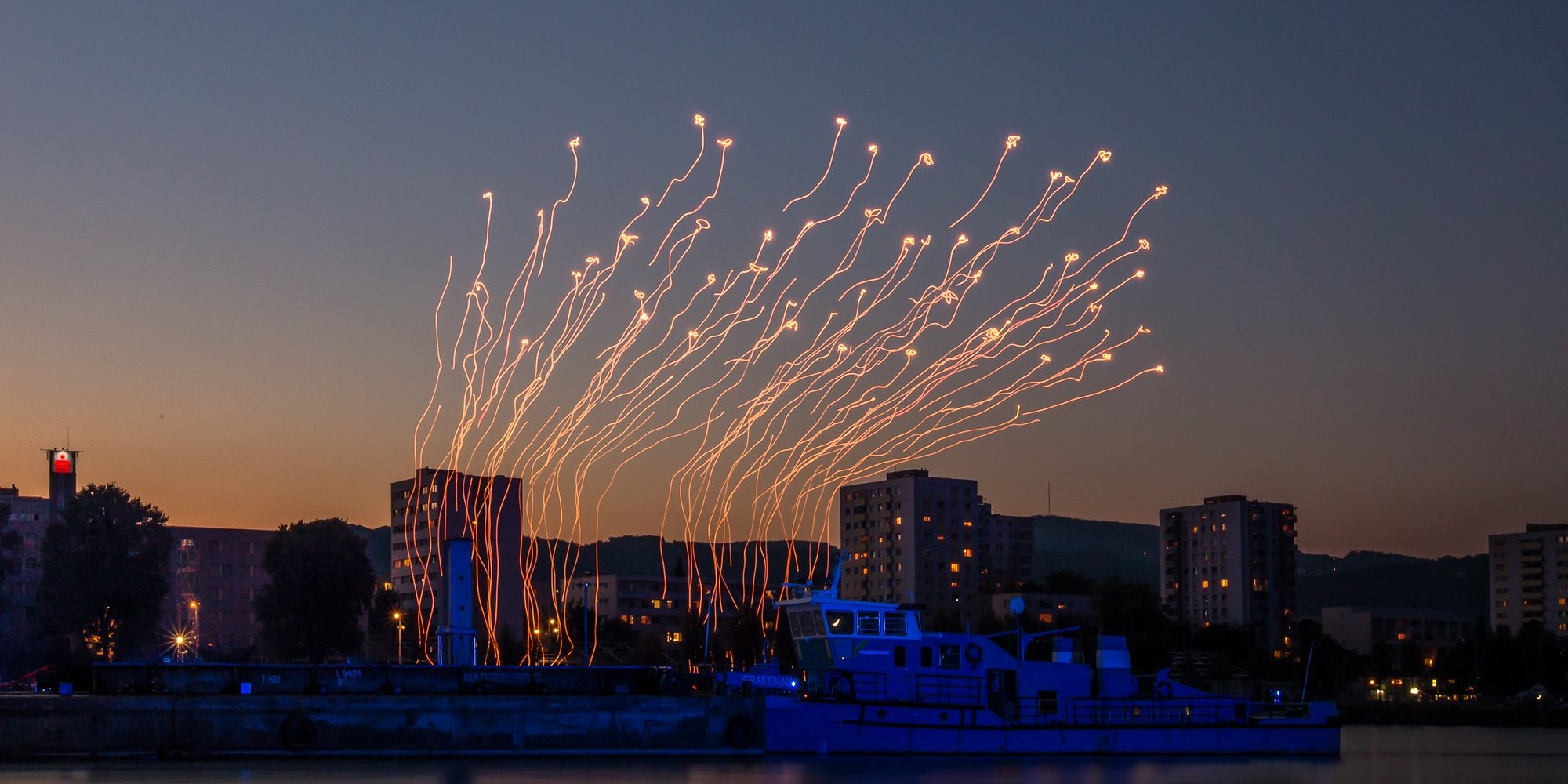Ars Electronica has been doing pioneering work since 1979—building bridges between disciplines, serving as a platform for new alliances, and providing impetus for an open, inclusive dialogue about our future. In collaboration with artists from around the world, we realize and present projects that challenge conventions and anticipate developments.
For this series, we are asking members of the Ars Electronica team to delve into our archive—the world’s largest of its kind—and select a project that has personally touched, inspired, or challenged them, and to tell us why this project is relevant today. Together, we will embark on a journey to milestones of the so-called digital revolution. Milestones that were cutting edge.
In this issue, Horst Hörtner, Senior Director and CTO of Ars Electronica, gives us an insight into a project that thrilled 85,000 people with glowing swarms of drones and participatory light art, and established the global market for drone shows.
Which project did you choose?
Horst Hörtner: First, I must confess: I spent days mulling over how to select a single project from the world’s largest archive of media art. In the end, I chose a project that is probably still vividly remembered not only by me, but also by many Linz residents: the Klangwolke 2012.
Tell us what this project is about.
Horst Hörtner: Austrians don’t need any explanation of the Klangwolke – but for everyone else, here’s a quick summary: it’s one of Europe’s biggest outdoor events, which has been held every year since 1979 (with a few exceptions) and has long enjoyed cult status. The Danube, which is 250 meters wide at this point, becomes the stage for an artistic performance, with the city skyline as a backdrop, while tens of thousands of people gather on the southern bank in the Danube Park.
In 2012, Ars Electronica was invited to design this event. We chose the history of communication—and the technologies that made it possible—as our theme. And because we are who we are, it wasn’t enough for us to “just” put on a show with ships carrying dancers, floating industrial robots spraying water from fire hoses onto projection screens, Austrian Army helicopters flying over the Danube – and even incorporating the ISS into the production.
No, we wanted to go one step further and draw images out of light in the night sky above Linz. So we developed LED-equipped drones that flew over the Danube as an autonomous swarm, forming huge, luminous sculptures. We christened them “Spaxels” – short for Space Pixels.

But even the Spaxels weren’t enough for us. Their flight was spectacular and a world premiere, but we also wanted to actively involve the audience. This gave rise to the idea for the Klangwolken ABC: a participatory project that was to start around six months before the actual event and give the people of Linz the opportunity to make their own special “glowing letters” and bring them to the Klangwolke.
Papplab developed prefabricated, three-dimensional cardboard letters for this purpose, which could be equipped with LED strips and batteries and decorated individually. Each letter was also equipped with a receiver unit—the so-called “Linzerschnitte,” which we had developed in the Futurelab.
During the Klangwolke, these letters were then used to control large spotlights. Even the lighting of the Pöstlingberg Church—one of Linz’s landmarks—was integrated into the lighting design in this way.

Why was this project outstanding in your opinion?
Horst Hörtner: It is rare for the entire Ars Electronica team to work on a single project. The Klangwolke 2012 was one such exception: employees from all areas of the company formed a large creative and project team that worked together for months on end.
There were workshops at the Ars Electronica Center, ongoing reporting by the video teams from our communications department, the development of “Spaxels” and “Linzerschnitten” in the Futurelab, the design of videos and animations by the team from Ars Electronica Solutions – and, of course, the planning and implementation of the event by the festival team.
In addition, we received support from numerous partners: the fire department, the motorboat club, the music school, the voestalpine factory band, OTELO, and many others.
All of this resulted in a diverse, passionate team united by a common goal: to give more than 85,000 people an unforgettable evening along the Danube.

Why is this project relevant today?
Horst Hörtner: For several reasons.
Firstly, with Spaxels, we have achieved more than just implementing a project, developing a product or founding a company. We have created a completely new market: there are now more than 150 providers of drone shows worldwide, staging events for major occasions such as the Olympic Games and US presidential inaugurations. It all began in 2012 – in Linz.
On the other hand, the “Linzerschnitten” built into the letters have also made a name for themselves: made available free of charge by us as an open hardware project, they have since been used in international art and robotics projects, in architecture, and even in university teaching.
And there is another reason why Klangwolke 2012 is more relevant today than ever before: the “Klangwolken ABC” turned it into a large-scale participatory project – and a democratic negotiation. The fact that there is no meaningful word in German with only one letter illustrates the principle: if you want to express yourself, you have to join forces with others, communicate, and create something together.

At that time, 5,000 people crafted their own letters and brought them to the Klangwolke. They mingled with the audience and spontaneously formed words, sentences, and poems — live, on site, together.
The fact that no one remained anonymous, but everyone became visible with their letter, meant that there were no offensive slogans or abusive messages. We had no control over what words would form on the lawn that evening. Was that a risk? Perhaps. For us, it was one thing above all else: a genuine encounter on equal terms. Not only between us and the audience, but also between the people themselves.
The Klangwolke 2012 was much more than a spectacular event. It was a social experiment that showed that ideas – whether individual or collective – can only be successfully implemented through exchange, negotiation, and cooperation. This form of democratic collaboration is more relevant today than ever before.
Horst Hörtner – thank you very much!
Discover even more projects from over 40 years of Ars Electronica in our archive.

Horst Hörtner
Horst Hörtner is a media artist and researcher focusing on human-machine interaction. He holds several patents, particularly for technologies related to drone swarm flights (“Spaxels”), which his laboratory presented as a world premiere in 2012. Active in media art since the 1980s, he co-founded the group x-space in 1990, which was awarded the Prix Ars Electronica. In 1995, Hörtner joined Ars Electronica as Technical Director and founded the Ars Electronica Futurelab with Gerfried Stocker, which he headed until 2024. Since then, he has been Senior Director and, since 2020, also CTO of Ars Electronica. Hörtner’s work combines art, technology, and society. He is internationally active as a lecturer, artist, and author.
